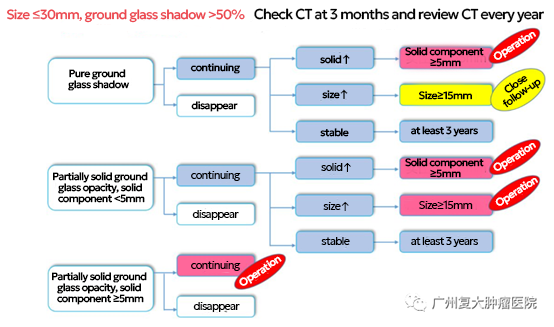With the popularization of CT, more and more pulmonary nodules have been diagnosed. When there are "shadows" or "nodules" in the lungs showed in the physical examination report, most people are confused and worried that what kind of nodule it might be and whether biopsy and surgically removed are needed or not. Recently, President Niu Lizhi delivered a lecture about cryoablation for pulmonary nodules at Lecture 42 of "Fuda New Vision, Xu Kecheng Lecture Hall".

Pulmonary nodules refer to nodular shadows within the lung parenchyma that are not part of normal lung tissue, with a diameter less than 3 cm. Those with a diameter less than 1 cm are called small-nodules, and those with a diameter less than 3 mm are called micronodules. However, those larger than 3 cm are called masses. Pulmonary nodule can be found either single or multiple in number.

More than 80%-90% of pulmonary nodules are benign, such as benign lung tumors, pneumonia, tuberculosis, pulmonary arteriovenous malformations, old lesions, etc. Of course, some nodules are malignant, and a small number of benign pulmonary nodules may develop into malignant with time, especially ground-glass nodules, which have a higher rate of malignant transformation. Such pulmonary nodules look like ground glass when viewed on chest CT, appearing as cloudy round, round-like lesions or irregular shadows.

According to current NCCN guidelines, surgical excision is still the cardinal choice, however, it has its limitation. If the patient cannot undergo surgery or refuses surgery due to age, poor cardiopulmonary function, multiple pulmonary nodules, or postoperative relapse and metastasis, cryoablation and thermal ablation (including radiofrequency, microwave ablation, etc.) are available.

Compared with thermal ablation, cryoablation causes less pain and stimulation to the body when the nodules are too close to the chest wall. While freezing the tumor to death, it will not form "lung cavities" like thermal ablation. Therefore, for relatively central and adjacent areas, Or for pulmonary nodules that invade the mediastinum or chest wall, cryoablation has more advantages.


The dual-probe method of cryoablation can frame ground-glass pulmonary nodules, improving the accuracy, success rate and efficiency of cryoablation of small lung cancer. And when the edge of the ice ball is 1.0 cm larger than the edge of the tumor, it can achieve satisfactory results. Researches and practices show that optimized three-cycle cryoablation for lung leads to lower recurrence and complication rates.
In addition, for small pulmonary nodules, biopsy and simultaneous cryoablation therapy can be used to solve the diagnosis and treatment needs at once, as well as reduce the risk of pneumothorax and bleeding caused by repeated punctures, avoid thoracotomy, and do not affect the patient's daily life. At the same time, combined radiotherapy and/or chemotherapy can be continued after ablation.

Currently, cryosurgical ablation is being used widely, but the number of cases with pulmonary nodules treated with cryoablation is relatively small compared with those with surgery. Therefore, further clinical research is needed.